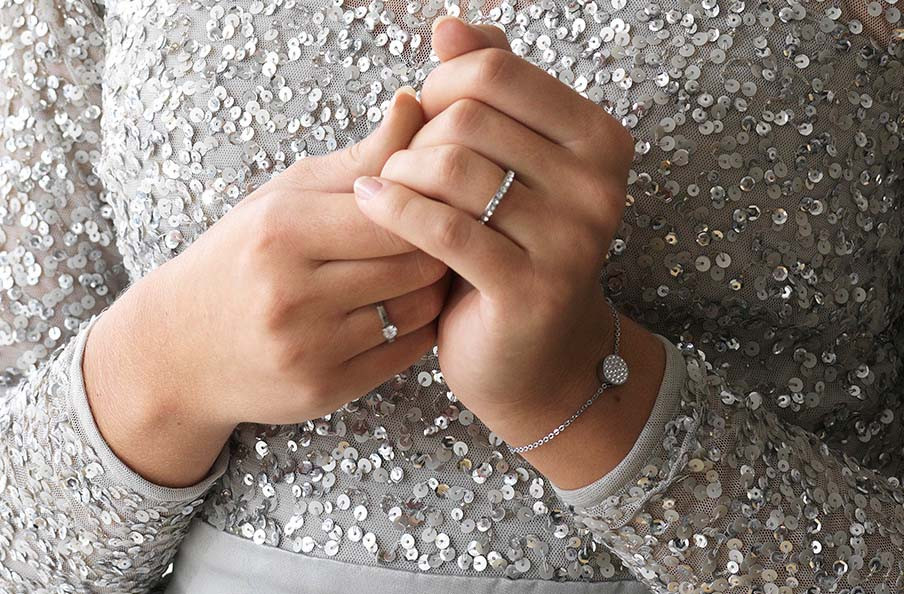Have you ever noticed a rash after wearing jewelry? Metal allergies can be quite common, especially when it comes to nickel. Nickel is a white metal, which makes it perfect for jewelry alloys, but it has a huge downside – an estimated 15% of the population is allergic to it.
In this article, we're going to take a look at the metals that cause allergic reactions and the solution provided by hypo-allergenic jewelry.
Types of Allergies to Jewelry
Some people have skin allergies to certain metals. Below is the list of the most common jewelry allergies:
- Nickel and stainless steel - We've already mentioned the infamous nickel, but some people will have a reaction to jewelry that contains stainless steel. The reason is stainless steel may contain nickel between 8% to 35%. People who are allergic to nickel will develop a reaction after contact.
- Copper and rose gold – Rose gold is an alloy of gold and copper, which has a beautiful reddish-pink color. However, copper is a known allergen. Alloying copper reduces the chance of having an allergic reaction. However, people who are allergic to copper or allergic to gold can be affected. If you must have rose gold jewelry, try to go for a piece that has a higher percentage of gold in the alloy.
- Brass – You can tell if your jewelry contains brass because it usually leaves a green mark on the skin. Brass is an alloy of copper and zinc, so if you are allergic to copper, you are most likely allergic to brass as well.
- Plated metals – Plated jewelry might seem like a get out of jail free card – the allergen is covered by another metal after all. However, this may not work. In such jewelry, allergenic metals may still contact the skin.
- Gold and platinum – A big misconception is that gold jewelry will protect you from allergic reactions. However, gold, unless it’s 24 carats, is always alloyed with some other metal, usually silver or copper. Some jewelry manufacturers may add up to 8% nickel to 14k gold for strength. Platinum jewelry can cause allergic reactions for the same reason.
How to Avoid An Allergic Reaction to Jewelry
Avoiding allergic reactions to jewelry is easy. It’s best to buy jewelry with a high level of purity, at least 14k for gold or Sterling 925 for silver. Avoid nickel, copper or whatever metal to which you have allergies.
Always buy hypo-allergenic jewelry that is specifically designed to avoid a reaction. This type of jewelry is nickel free. Two options for hypoallergenic nickel free earrings include medical grade plastic or titanium.
If you've already purchased a piece of jewelry or have an heirloom piece, but it's causing you to have an allergic reaction, you do have several options:
- Only wear the jewelry for a short while.
- Make sure to keep your skin dry.
- Take the piece to your jeweler and ask if he could plate it with a different metal as a thin film or coating.
- Use clear nail polish and apply a thin coat to the jewelry where it contacts your skin. You'll be surprised at the results!
Choose Hypoallergenic and Nickel-Free Jewelry
We hope that our quick guide has brought you up to speed on the allergenic metals found in jewelry. The best way to get around irritating skin reactions is hypoallergenic jewelry. The best kids hypoallergenic earrings are plastic or titanium.
Blomdahl USA is your #1 source of hypoallergenic nickel-free jewelry.
